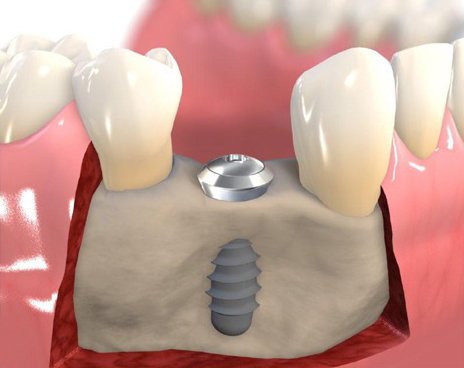
The bone graft is closely related to the treatment of dental implants. Just like natural teeth, implants must be fully encased in bone to allow strength and longevity. This is why it is important to repair or replace the jaw bone that will receive a dental implant.
There are many advantages to use dental implants over other traditional options. Traditional bridgework requires that the teeth adjacent to the gap be shaved down. This damage to the teeth is irreversible. In addition, removing a denture at night to rest the gums, is inconvenient, not to mention that dentures can be uncomfortable. In general the bone graft occurs in the following steps. Once the patient is under sedation or after achieving local anesthesia, the surgeon gently peels the gum from the bone. The natural bone is then sculpted to receive the grafting materials. Your own bone tissue can be used for the graft but other bone substitutes are commonly used for this procedure. Sometimes a special membrane needs to be placed over the bone graft to allow appropriate bone healing. The gums are then put back in place and maintained with a few stitches. After a few months, your natural bone will grow and connect with the grafted bone portion. New tissue will grow and the bone will be ready to receive the dental implant.
Implants need to be anchored in the jaw bone like natural teeth – in some cases additional bone is needed.

Straumann bone grafting material can be placed to help your body develop new bone to support an implant.

